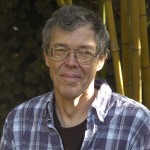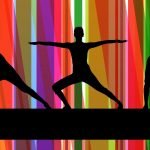The Current Healing Crisis—Part 4
Science is Not Monolithic
Robert B. Kellum, ND, PhD, MSOM/LAC, LMT
We have to keep in mind, in a broader sense, that we are already immersed in religion in the present form of “science” that we have today. Contemporary medicine itself has been likened to a religion.38 The anthropologist Clifford Geertz defines religion as a system of symbols acting to establish motivations in people, by formulating conceptions of a general order of existence and clothing these concepts with an aura of factuality such that these motivations seem uniquely realistic. So, for example, economists celebrate Adam Smith’s religion of “the invisible hand” in providing order, without questioning the underlying consciousness of its coordinated animation. Astrophysicists celebrate the religion of the big bang, without examining from whence the initial density and heat arose to propel the “primeval atom’s” expansion and cooling over billions of years to be the universe we know today. Politicians celebrate a national religion of ethical principles that impose moral order by way of an ideology of freedom and democratic values, without considering the underlying struggles shaping this morality in a class-based society.39 And of course science itself today celebrates a religion (of uniformity, theoretical neutrality, replicability, and reducible simplicity) as criteria for providing an ordered system of knowledge, without examining how such criteria can vary in meaning according to the context of commitments in which they are used.40 It has been, after all, as Robert Merton has pointed out, the Western puritanical values of utility, rationality, empiricism, asceticism, and individualism that have led to the unwitting furtherance of what we know as modern science today. Our science, then, is a construction of a particular political, economic, and religious persuasion. The notion of its having universality has definite mythical overtones, but like all myths it provides us with a way of knowing, an archetypal model for how to negotiate life and death. The difference between anthroposophy and all these other quests to attain an explanatory order is anthroposophy’s militance against presuming that the order we seek to understand is an automatic mechanism, but rather viewing it instead as a creation from which we have evolved and which still lies before us, calling for our conscious moral engagement. This is an important tenet of a spiritual science—that there is an animating spiritual force behind the order in all systems and that the understanding of this order is contingent on a moral development congruent with its creation. The contradictions in the world around us are the challenges spurring transformation and deeper understanding, which go together.
The word religion, derived from the Latin root religare, “to bind things together” (as in ligament), suggests it as a force that binds lives together in meaningful ways, much like the Sanskrit yoga, as a joining together of what was once connected but which has come apart, in both cases involving the living of one’s life purposefully in a path of personal development. The word science, on the other hand, comes to us from the Latin root scientia, “knowledge,” and from sciens (present perfect of scire, “to know”) as originally meaning “to separate one thing from another, to distinguish,” as related to scindere, “to cut, divide.”41 Do you see here, then, how intimately religion and science are connected? We bring things together to create meaning, but we are not wholly satisfied, so we separate things out and divide them to continually analyze them anew, in an ongoing process of learning and unlearning. They are but different aspects of the same process, and mediating between them is the art of practice. Carl Unger42 brings out the relationship between science, art, and religion as actually a 3-fold integrity among thinking, feeling, and willing.
As a spiritual science, anthroposophy admits all aspects of the spiritual realm, including religion, as its subject matter. But embracing this interest does not mean it is dogmatically ruled by it. The development of Western science has been saddled with the myth that scientific communities have achieved a knowledge that is closely and increasingly isomorphic to the structure
of reality because their members are
self-critical, impartial, and disinterested. This freezes the process as aforementioned into an act of perpetual cold analysis, devoid of any sustained connection with meaning. In this frozen context, intellectual endeavors to ascertain truth from an examination of objective evidence have been heralded as necessarily being free of emotions. Unlike a layperson’s potentially more emotional path to “common sense” understanding, scientists believe themselves obliged to conform to these social expectations as part of their training and practice. Failure to abide by these norms is felt to lead to an overcommitment to one’s own ideas and thus an inability to perceive if one’s ideas are consistent with the evidence. It is the institutionalization of these norms that has been seen as responsible for the rapid accumulation of reliable knowledge, an event held as the unique achievement of Western science. By a more anthroposophic approach to science, however, this
particular character of Western science sets up the very limitations of what truths it can and can not discover. By removing the human element in search of objectivity, Western science denies itself a wealth of connections, both in its research and
in its social community. For anthroposophy, the natural world is not so much
revealed by virtue of reining in oneself,
but rather is constructed by way of active
self-engagement and self-development as the locus of this investigation not only on the basis of objective observation in the sense world but also in the developed capacity for objective observation in the spiritual world as well. Methodologically, the difference lies between striving to rein in oneself vs striving to know oneself. For spiritual science, our state of human imperfection that mars our observations, is not an obstacle to be overcome by self-denial, but rather is the primary impetus out of which a greater holistic understanding is realized:
You feel in yourselves a vast abyss across which you have to find a bridge. You must find the bridge from the medical scientific to that which is moral…. How is the moral world order connected with physical world order? …[T]he prevailing world view—which relies entirely upon natural science for knowledge of the outer physical world—can only resort to earlier religious beliefs when it is a matter of any comprehensive understanding of the life of soul…this world view is unable to build a bridge. There, on the one side, is the physical world; according to contemporary views this is a conglomeration from a primeval nebula and everything will eventually become a kind of slag heap in the universe. This is the picture of the evolutionary process presented to us by the science of today, and it is the one and only picture in which a really honest modern scientist can find reality…. [I]f the assertions of natural science are true, that first everything was astir with life, then finally the human being emerged out of the primeval nebula, and only then the moral ideals well up within…all moral ideals will have vanished…no bridge can possibly be built, and what is worse, modern science cannot, without being inconsistent, admit the existence of morality in the world order….
Rudolf Steiner, Course for Young Doctors: Meditative Contemplations and Instructions for Deepening the Art of Healing (pages iii, 240-241)
Developing the foundation for anthroposophy out of his studies of Goethe’s phenomenology, and as part of an inspired academic intellectual pursuit, Steiner evolved the capability to objectively examine the spiritual realm through a conscious, direct perception of spiritual realities, and he provided a systematic way to attain this perceptual capacity for everyone, not as a lone mystical avatar, but as an active proponent, indeed endeavoring to raise everyone’s capacity for conscious development. It was and remains something to be achieved by developing a set of skills, just as a scientist of any other persuasion might develop skills to ply his or her craft. Steiner eschewed the idea that the path to spiritual knowledge needs to be some bizarre, mysterious practice. Just as a DO develops palpation skills indiscernible to the untrained, and just as an MD with long clinical experience can perceive aspects of illness not visible to the layperson (eg, “smelling measles”), Steiner evolved a method of developing perceptual skills to open the spiritual world to sensory observation, attaining knowledge of reality as a consciously intuited inner experience. Anthroposophy leads from the spirit of the human being to the spirit in the universe, holding that humanity (anthropos) has the inherent wisdom (sophia) to transform both itself and the world—to use words, concepts, and ideas so that something living may shine down from the spiritual world into the physical—imparting knowledge, yes, but also awakening it.43
Normative principles vary with particular scientists’ skills, with particular interpretive frameworks from which scientists derive their knowledge, and with the particular intellectual contexts in which scientists’ ideas are implemented. We need a science based in the spirit to understand spirit. We need a science that sees the establishment of scientific knowledge as a creative process. We need a science that transparently links the microcosm with the macrocosm as its contextual realm. Anthroposophic science can better move us forward in this direction than the limited tenets of Western science we wrestle with today. If we practice an amoral science in pursuit of understanding reality, we will not find the basis for a moral world order beyond its existence as an inexplicable mechanism. If we engage on a spiritual path in the development of our moral potential, we will discover a deeper understanding of the world about us as it reflects and engenders this order. Much like Schrödinger’s cat, these are 2 separate political acts and 2 different normative structures, each internally consistent, each with outcomes reflective of their constructions, and each possible. Life could be one or the other. Which do we want?44
Science that denies any connection with a moral framework inadvertently brings in a mechanistic morality as its dark side regardless. This is the morality, for example, of Terry Gilliam’s black comedy Brazil (1985) or of Karl Popper’s abstract society, arising out of the drive to individuation, in which people practically never meet face to face, business is conducted by individuals in isolation who communicate by typed letters, travel in closed motorcars, and ultimately perhaps reproduce by artificial insemination. This is the society in which the drug you need for your cancer, developed largely through public funding, will cost you $100 000 or more a year (in part simply because you are in a position of needing it), the society in which the nation’s largest banks can create a national crisis through predatory lending of subprime loans and be bailed out by the government,45 and the society in which a company like Orbitz can suddenly decide that because you own a Macintosh computer you will automatically be offered lodging choices at 30% higher rates.46
The Integrative Framework of Anthroposophy
Anthroposophy can provide a truly integrative framework for uniting the medical sciences into a cooperative effort that allows each its identity. There is a pressing need for a united bridge across all health professions today. In the early 20th century, when Steiner gave his medical lectures in response to the
spirit-hungry physicians who requested them in Europe, he spoke mainly to homeopathic physicians. Particularly in the United States, with the Flexner Report and the rise of the American Medical Association, the character of the physician in the West has changed dramatically in the years that have followed since, as the tenets of “empirically” based objective science took materialist hold over the profession. But in spite of this, the physicians who have really continued to carry anthroposophic medicine forward have been a courageous group of MDs and DOs arising out of the very camp that condemned this kind of medicine. Like us, they have found cause for disillusionment with their profession and wish to move the potential of medicine to the higher plane of which it is capable.
Yet, even as anthroposophic medicine has amply demonstrated itself as effective,47 what I have noticed at many anthroposophic medical conferences I attend is that there are a lot of participant MDs and DOs with good hearts and minds. They really want to break into practicing anthroposophically yet are caught up in restrictive standards of care, either as hospitalists, in private practice with other unsympathetic colleagues in their practice, or with patients who want the conventional medicine they were trained to give (with insurance companies placing restraints on what they will reimburse, etc)—such that past momentum instills present inertia. They come to these conferences almost as wishful utopian vacations, in hopes of grabbing yet another potential to bring their clinical dreams into further fruition.
Clearly, we need a concerted initiative to successfully sustain an anthroposophic medicine that takes us outside the box of current medical science and the divisions it fosters, and which can lead us to an independent space, strengthened by our collective unity, from which we can gather all that is good about Western science and bring it to a higher plane. We all would benefit from this union. Every year at these anthroposophic conferences, I get the refreshing opportunity to work with intelligent, passionate MD, DO, and NP colleagues who are trying to move beyond materialist-based science with a viable working alternative. On the fringe of their own profession,48 these MDs, DOs, and NPs are allies of the naturopathic community. Their forces do not threaten to engulf and overshadow its identity, but rather celebrate it and wish its support. In some respects, they have an advantage over NDs in that their own negative medical experiences have propelled them with greater impetus to move forward out of it, while our drive for legitimacy at times seems to propel us more deeply into Western science. Our union will serve us both.
We as NDs are not yet fully laden with the same standards of care as our MD, DO, and NP colleagues. We have many more nature-based modalities in our bag, and in general we practice a medicine with a much greater affinity to the context of anthroposophic medicine’s origins. We are in a position, then, to advance anthroposophy more so than those whose hands are more tied than ours by allopathic restraints; we are in a position to take on a leadership role in helping to carry this initiative into the broader domain where it belongs. Our union will serve us both.
There will be a place for the excellent crisis-honed skills of Western medicine for many years to come. I would not go to an ND for heart surgery, for example, and given the current incidence of so many people with preventable chronic illnesses, with no widespread cultural support or vision for how to address them, the value of pharmaceutical drugs in abating symptoms will no doubt continue as an important service for some time. But it is not the future direction any of us are aspiring toward in anthroposophic medicine as an indication of our scientific progress. The problems of multidrug interactions alone tell us that more drugs are not the answer.49 In a similar vein, the science of epigenetics is showing us that we are not slaves to our genetic makeup, that medicine is not limited to the narrow reactionary vision of simply finding the (increasingly) errant gene and fixing it.50
Many of us in the naturopathic community see ourselves as already on the fringe of healthcare in many ways, with the idea of additionally incorporating spiritual science being an even further extension of how far we find ourselves out on a professional limb. While AEM is still largely unknown here in the United States, in Europe there are currently several thousand fully trained anthroposophic MDs, spanning 16 countries in their practice.51 At differing levels of training, there are more than 15 000 European physicians prescribing anthroposophic medicines to some degree.51 In addition, in Europe AEM is provided in 24 hospitals (where all specialties are represented) and at 120 outpatient centers.51 According to the results of the action ELIANT,52 the number of people seeking anthroposophic medical care may be more than 1 million in the European Union alone. Worldwide, AEM is practiced in an additional 13 different countries (Argentina, Australia, Brazil, Canada, Israel, New Zealand, Georgia, Peru, Philippines, Russia, South Africa, Ukraine, and the United States).51 We need to take a broader view in casting our self-image as being more on the cusp than on the fringe because there is wide, longstanding, and growing support for the development of this medicine.
We need a medical science that is integrative. Contrary to even heartfelt overtures, we do not have this currently. How many physicians know the reality of patients trying to coordinate their own integrative medical care by seeing some collective involving potentially their MD, DO, NP, DC, ND, LAc, LMT, and so on. Patients hope, even expect, that these professionals will all work together, whereas in reality more often than not they are politely at odds with each other, each of them hoping that no one gets in the way of their treatment plan. Anthroposophically enhanced medicine has a long tradition of coordinated care that is holistically integrated, not fragmented into noncollaborative specialties but truly reliant on the perspectives and treatments of many different modalities within a common paradigmatic goal (eg, eurythmists, art therapists, music therapists, spatial dynamic practitioners, rhythmic massage therapists, educators, etc). In AEM, we have a model for how to bring MDs, DOs, NPs, NDs, LAcs and other health professionals together within a common overarching paradigm of spiritual science, within which each can potentially sustain his or her individual identity and purpose.
We also need an anthroposophic organization for NDs to save anthroposophic medicine itself. Not only is there research, writing, and clinical development to be done, AEM needs the disciplined minds of both a greater number and a broader spectrum of spiritually minded scientists to subject its tenets to the same criticism and debate that advances any science. And ultimately, we need an anthroposophic organization for NDs to take us beyond anthroposophy as a preconceived construct. None of us wants to be cast into an anthroposophic template from which we predictably engage a static world. The authentic journey must be one of discovery, and this indeed is the anthroposophic message that Steiner most wanted to convey. As with any generation, it is our task to admit the merits of our older contemporaries, while not allowing their shortcomings to impede us. Anthroposophy is nothing if it is not a living, growing transformative presence, demanding that each generation breathe new life into it, transforming it, even as we gratefully celebrate what it is.
Anthroposophy Is Not, and Never Should Be, for Everyone
We are not interested in converting naturopathy into anthroposophy any more than we are interested in sanitizing spiritual science so that it fits into a more mechanistic naturopathic form, but we do believe that the association between anthroposophy and naturopathy will enhance both regardless. There are no doubt people whose personality, spiritual connection, business savvy, and approach to naturopathy serve them and their patients quite well already and who are happy with the organization of their current practice as it is. Obviously, we want to nurture the development of more NDs just like this in our growing profession. We believe that a dialogue with anthroposophy, as an organized presence, provides a broader institutional milieu, currently missing, for each physician to more easily forge a more holistic and meaningful approach to the practice of naturopathy on his or her own terms, regardless of whether he or she chooses to become part of our organization or even adopt an anthroposophic perspective in practice. To Steiner, we owe the development of Goethe’s process morphology into a systematic science of 3-foldedness, with profound spiritual and holographic implications.53 We want to open wider the door of dialogue with this approach, regardless of what one chooses to call it, realizing that individuals can and will decide for themselves how much of this holographic tapestry they may wish to incorporate in their practice. The problem, then, is a simple one; the solution is the challenge. We have a means of integrating with all other health professions. We have a way to further our profession with a legitimate science that does not reduce us to inconsistent reductionists or quasireligious animists. We have a way to return to a qualitative healing medicine that will restore patient empowerment in conjunction with authentic medical authority. This is not an issue involving the need for greater knowledge so much as marshaling the courage to bring it forth. We are at a healing crisis in our profession. I am hopeful that with the proper care and education the patient will survive and flourish.
Thanks to friends and colleagues Dr Andrew Elliott, Dr Alicia Landman-Reiner, Dr Dick Thom, Dr Paul Kalnins, Dr Heiner Fruehauf, Dr David Bartelt, Dr Philip Incao, and Donna Patterson, LMT, for their helpful feedback in editing and revising this article. Final responsibility for the ideas within it are solely the author’s.
 Dr Robert Kellum is a board-licensed ND and practitioner of Traditional Chinese Medicine, seeing patients in Portland, Oregon. With other interested colleagues, he is spearheading the development of the Society for Physicians of Anthroposophic Naturopathic Medicine (SPAN-MED), with the intent of its being part of an umbrella group within the Anthroposophic Association of Medical Therapies in America (AAMTA), for developing the cross-disciplinary seeds of an integrated spiritual science through the drawing together of NDs and like-minded colleagues as a conscious force in their professions. For more information, you can contact Bob at [email protected].
Dr Robert Kellum is a board-licensed ND and practitioner of Traditional Chinese Medicine, seeing patients in Portland, Oregon. With other interested colleagues, he is spearheading the development of the Society for Physicians of Anthroposophic Naturopathic Medicine (SPAN-MED), with the intent of its being part of an umbrella group within the Anthroposophic Association of Medical Therapies in America (AAMTA), for developing the cross-disciplinary seeds of an integrated spiritual science through the drawing together of NDs and like-minded colleagues as a conscious force in their professions. For more information, you can contact Bob at [email protected].
References
Clerc O. Modern Medicine: The New World Religion: How Beliefs Secretly Influence Medical Dogma & Practices. Stern R, trans-ed. Fawnskin, CA: Personhood Press; 2004 :2. http://www.whale.to/a/clerc.html. Accessed January 2, 2013. “Medicine and science have replaced religion as the only certain belief in an uncertain world. And the doctors and scientists are seen as the priests of the new religion, delivering through the certainties of science what the old discredited gods were not able to deliver…. Almost imperceptibly, medicine has taken on a saving, or messianic role, the characteristics of which we must examine. I do not believe that doctors, scientists and governments are intentionally and corruptly conspiring together. But rather, people, whether within the medico-pharmaceutical industry or outside it, are being subconsciously influenced by their deeply rooted myths, fears and superstitions which are now being projected onto the new screens of science and medicine. This produces an amazing paradox. Although medicine sees itself as exclusively scientific and rational, with no room for spiritual or human dimensions, it organizes itself and functions in a way that can be described as intrinsically religious. The paradox is that by rejecting any spiritual dimension medicine in fact becomes the toy of the forces and myths it tries to ignore and cannot control. We can see, then, that even though our society considers itself to be secular, it has remained as Christian as it was a century ago, but with two major differences. Firstly, our society is not aware of it. It believes itself to be rational, scientific, and free of superstition. It fails to recognize that it is still, in effect, observing the old religious rituals, but under a new guise. Secondly, our society now lives its religious experiences through secular forms—medical ones, in particular—and has at the same time transferred its hopes and aspirations from the spiritual world to the material…. Medicine, then, has become the new world religion. The specific myths, beliefs and rites of Christianity have been unconsciously projected over medicine since Pasteur. We can establish a very close parallelism between the catholic religion and modern medicine. In brief: physicians have taken the place of priests; vaccination plays the same initiatory role as baptism, and is accompanied by the same threats and fears; the search for health has replaced the quest for salvation; the fight against disease has replaced the fight against sin; eradication of viruses has taken the place of exorcising demons; the hope of physical immortality (cloning, genetic engineering) has been substituted for the hope of eternal life; pills have replaced the sacrament of bread and wine; donations to cancer research take precedence over donations to the church; a hypothetical universal vaccine could save humanity from all illness, as the Savior has saved the world from all sin; the medical power has become the government’s ally, as was the Catholic Church in the past; “charlatans” are persecuted today as “heretics” were yesterday; dogmatism rules out promising alternative medical theories; the same absence of individual responsibility is now found in medicine, as previously in the Christian religion; patients are alienated from their bodies, as sinners used to be from their souls.” This text first appeared in CONTINUUM Magazine and is the introduction to the book Médecine, Religion et Peur: l’Influence Cachée des Croyances by Olivier Clerc. The book was published in 1999 by Editions Jouvence. Olivier Clerc has been working for 20 years in the field of alternative medicine, spirituality, and personal development as author, translator, journalist, and publisher. Besides his book on medicine and religion, he has written a book on lucid dreaming (Vivre Ses Rêves, Helios, 1983) and another about isolation tanks (L’Océan Intérieur, Soleil, 1985) and was chief editor of a French magazine dedicated to health, ecology, and social issues. He was editorial director of Editions Jouvence, Switzerland, until February 2001.
Bellah RN. Civil religion in America. http://www.robertbellah.com/articles_5.htm. Accessed September 22, 2012.
Mulkay M. Science and the Sociology of Knowledge. London, England: George, Allen & Unwin; 1979.
Online Etymology Dictionary. http://www.etymonline.com. Accessed September 22, 2012.
Unger C. The Language of the Consciousness Soul. Spring Valley, NY: St George Publications; 1983:181,185 (available at Orradre Library at the University of Santa Clara, Santa Clara, CA). Unger sees “religion as a soul process arising when feeling is active in willing, art as a soul process occurring when thinking is active in feeling, and science a soul process arising when willing is active in thinking…. Religion, which should operate in willing, is paralyzed by art, and through Intuition, finds its redemption in knowing. Art, which should operate in feeling, is paralyzed by science and, through Inspiration, finds its redemption in a religious element. Science, which should operate in thinking, is paralyzed by religion and, through Imagination, finds its redemption in an artistic element.”
United Communities of Spirit. Anthroposophy: toward a more human future. http://origin.org/ucs/doc.cfm?e=1&fg=3176&fi=1122. Accessed September 22, 2012.
Lindlahr H. Nature Cure: Philosophy & Practice Based on the Unity of Disease & Cure. 1913 :364. http://www.pulsemed.org. Accessed January 2, 2013. “If there is in operation a constructive principle of Nature on the ethical, moral and spiritual planes of being, with which we must align ourselves and to which we must conform our conscious and voluntary activities in order to achieve self-completion, self-content, individual completion and happiness, then this constructive principle must be in operation also in our physical bodies and in their correlated physical, mental and emotional activities. If the constructive principle is active in the physical as well as in the moral and spiritual realms, then the established harmonic relationship of the physical to the constructive law of its being must constitute the morality of the physical; and from this it follows that the achievement of health on the physical plane is as much under our conscious and voluntary control as the working out of our individual salvation on the higher planes of life.”
Garofalo P. Former Chase banker admits his bank pushed minorities into subprime mortgage loans. December 1, 2011. http://thinkprogress.org/economy/2011/12/01/379332/former-banker-subprime-pushed/?mobile=nc. Accessed September 22, 2012.
Shaw Brown G. Mac users see higher-priced hotels on Orbitz. http://abcnews.go.com/Travel/mac-users-higher-hotel-prices-orbitz/story?id=16650014#.T-_us44ct7Q. Accessed September 22, 2012. See Popper KR. The Open Society and Its Enemies. Princeton, NJ: Princeton University Press; 1962. See also Rafe Champion’s commentary at http://www.the-rathouse.com/OpenSocietyOnLIne/Chapter10.html.
IVAA. Integrative medicine should be integrated into EU: research funding policies. http://ec.europa.eu/research/horizon2020/pdf/contributions/post/international_organisations/international_federation_of_anthroposophic_medical_associations_ivaa.pdf. Accessed September 22, 2012. A 2006 evaluation of anthroposophic medicine in Switzerland by Health Technology Assessment systematically reviewed 189 clinical studies, concluding that anthroposophic medicine is effective, economical, and safe. Of these studies, 180 demonstrated a positive result (better or equal) for anthroposophic medicine compared with conventional medicine effectiveness, cost-benefit, and safety.
Goetheanum. International Coordination of Anthroposophic Medicine/IKAM events and perspectives in 2010: report of medical section activities. http://www.medsektion-goetheanum.org/EYED2/files/file/pdf_EN/22761_Goethe_Jahresbericht_EN.pdf. Accessed September 22, 2012.
Starfield B. Is US health really the best in the world? JAMA. 2000;284(4):483-385. Dr Starfield’s study reveals medical doctors as the third-leading cause of death in America, with almost half of 250 000 iatrogenic deaths due to negative effects of properly prescribed drug use.
Church D. The Genie in Your Genes. Fulton, CA: Energy Psychology Press; 2009.
IVAA. Anthroposophic medicine: facts and figures AM worldwide. http://www.ivaa.eu/?p=72. Accessed September 22, 2012.
Allianz ELIANT. Ein Einzelner hilft nicht, sondern wer sich mit Vielen zur rechten Stunde vereinigt. http://www.eliant.eu/. Accessed September 22, 2012.







